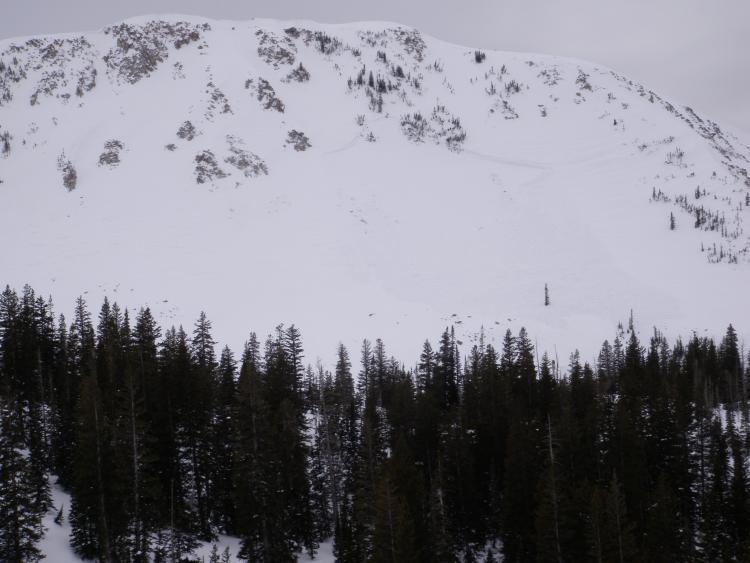Observer Name
D Jackson, D Oberlander, Hardesty
Observation Date
Thursday, March 3, 2011
Avalanche Date
Wednesday, March 2, 2011
Region
Salt Lake » Little Cottonwood Canyon » Maybird Gulch
Location Name or Route
Maybird Gulch- Obelisque
Elevation
10,400'
Aspect
Northeast
Trigger
Natural
Avalanche Type
Hard Slab
Depth
3.5'
Width
400'
Vertical
400'
Comments
We had been admiring the significant evidence of loading lee to the S ¼ in Maybird Gulch (the E ¼ was seeing some cross loading but that of a very inconsistent nature with long ribbons of snow gathering around features) when we decided to dig around on a W aspect- a case of ignoring class one indicators while paying too close attention to class two indicators as it turned out. Upon completion of a pretty interesting profile we turned around to see a significant natural occurrence on the Obelisque. This running upslope of the crown from 20 Feb, 2-5ft in depth with the highest portion of the crown at a thin and rocky convexity- likely on the same sliding layer (below the MLK Crust) from 20 Feb (although I’m not convinced that some of the large occurrences of late aren’t running on the 8 Jan Surface hoar). Saw one other touring party in Maybird but had a pretty good look at the periphery of the slide with no tracks visible. Thus thinking not likely a remote or cornice fall trigger.


Comments
Significant natural avalanche on the east facing wall beneath the Obelisk in Maybird. Clearly wind-loaded on Wednesday - the day of the avalanche. Hard slab - parts of the slab were 'knife' hard - collapsed the MLK rain crust and ran on mostly facets perhaps 5" beneath. Found some decomposing surface hoar, but not widespread. Facets still loose.
It appeared that the initial trigger was a wind slab that ran naturally at the top of the crown where it was much thinner, and subsequently stepped down into the January snow. Fairly complex pattern...as the bed surface 30m below the crown was the rain crust, then it then stepped to near the ground.
Unable to replicate any failures on the weaknesses with any classic 'tests' so to speak; however, I was able to crowbar out an extended column by prying on the back to initiate a full propagation at the same weakness.
Coordinates






